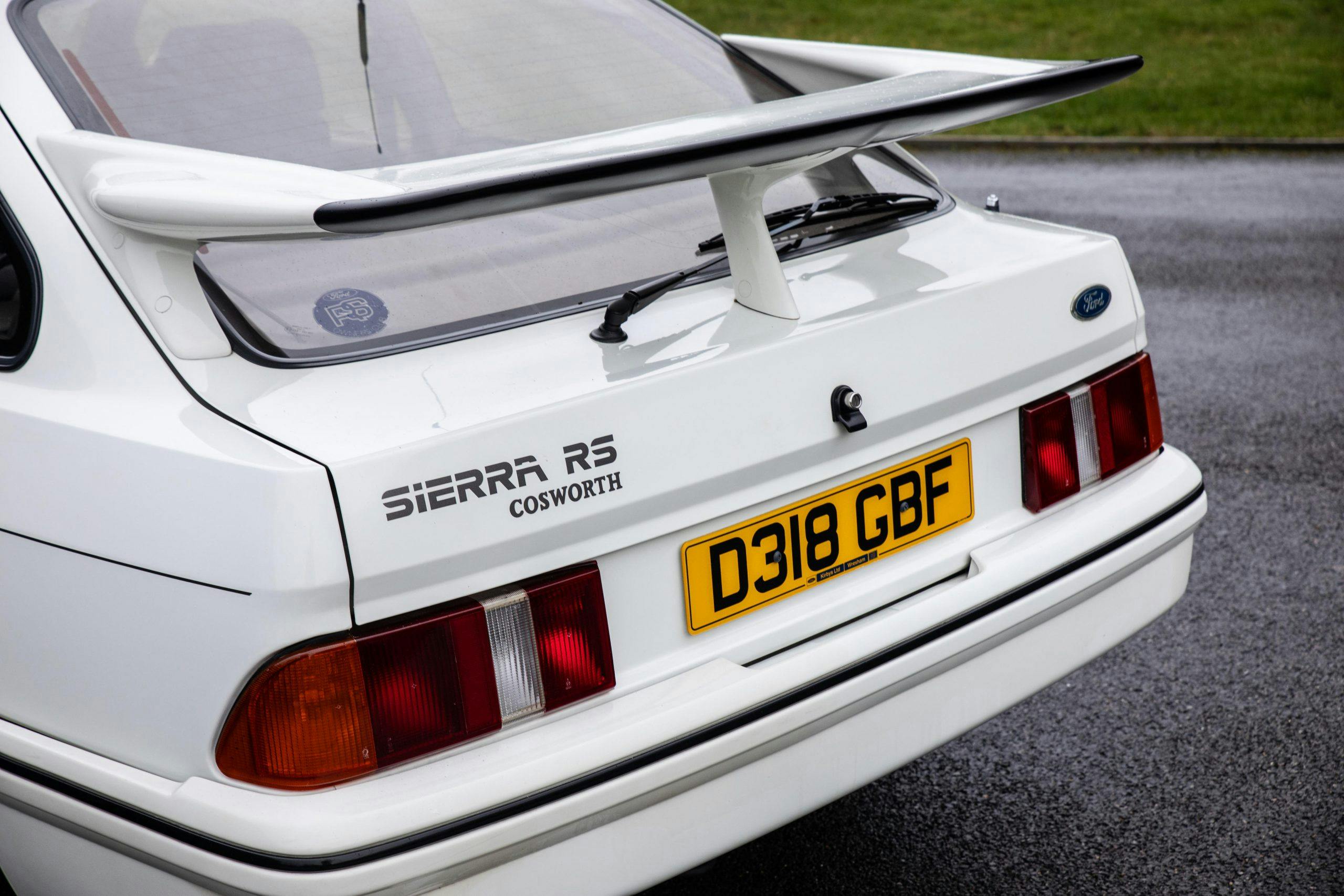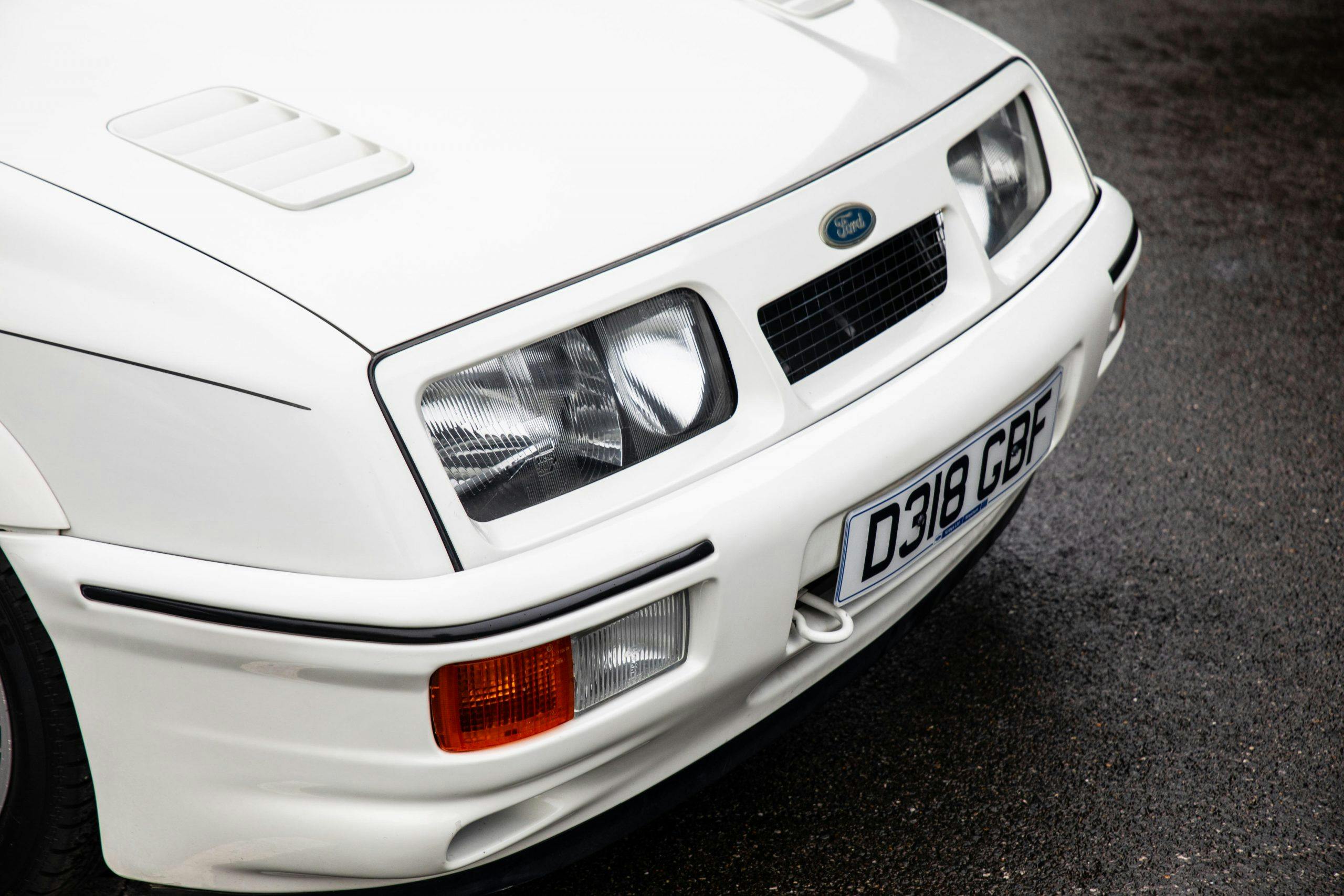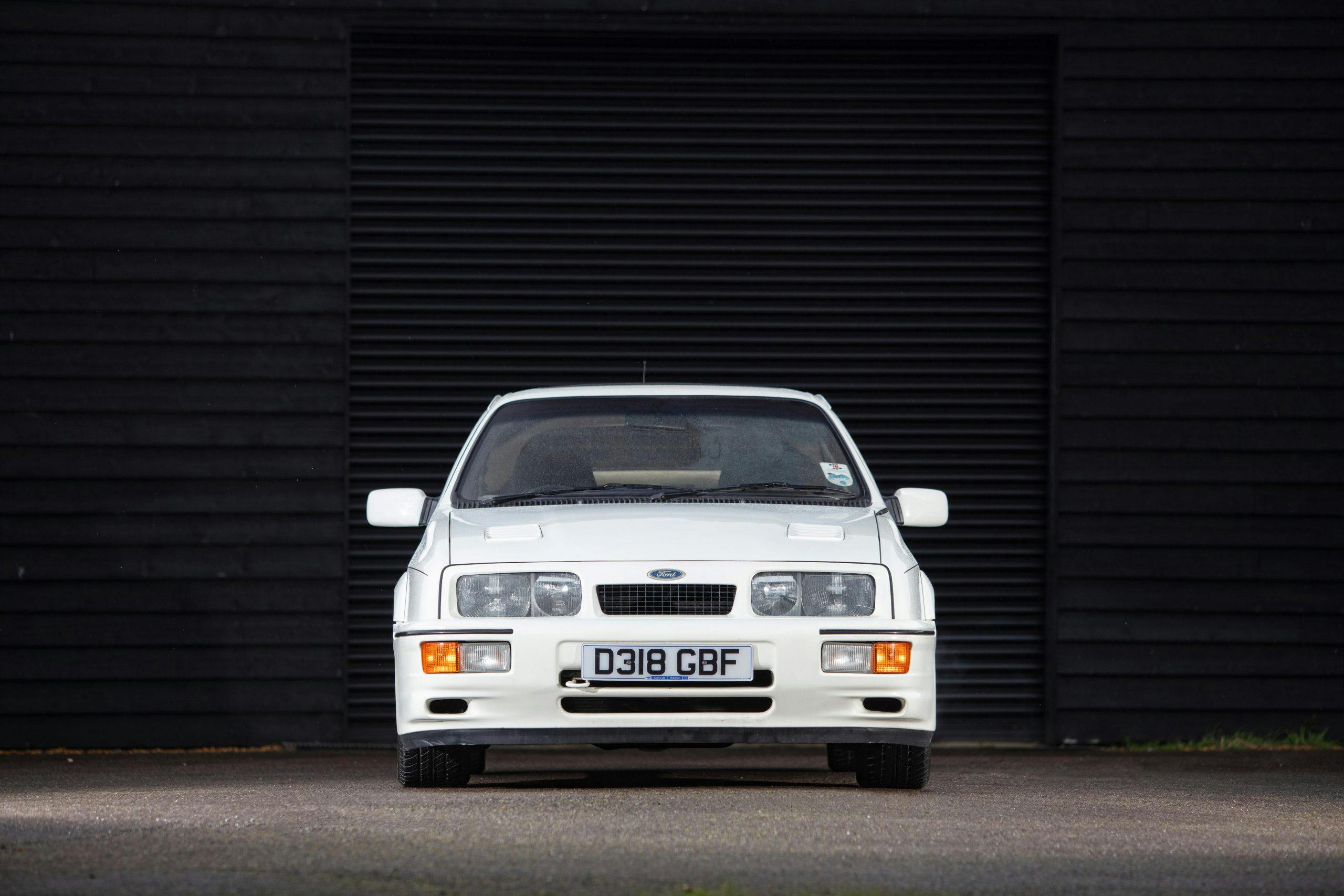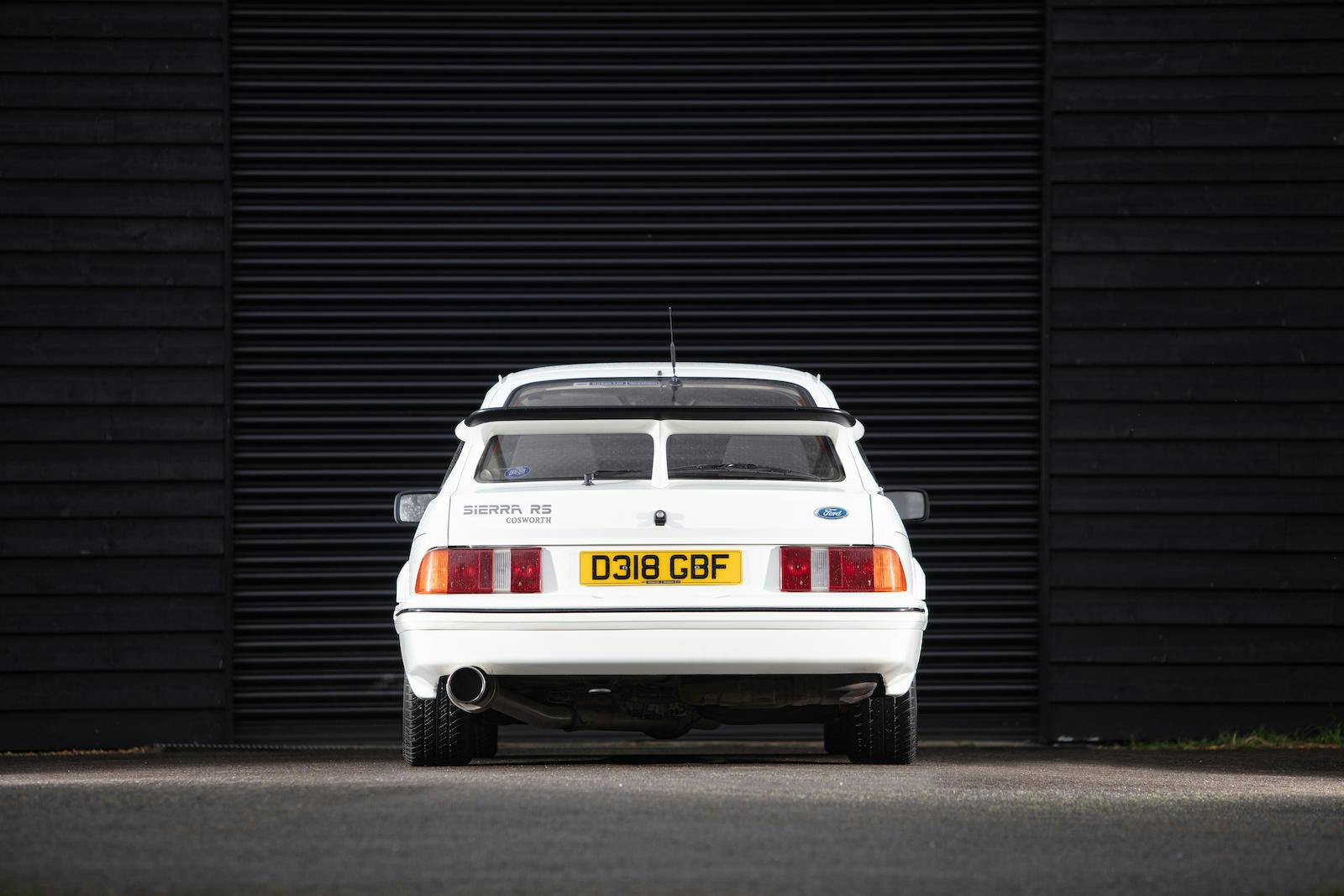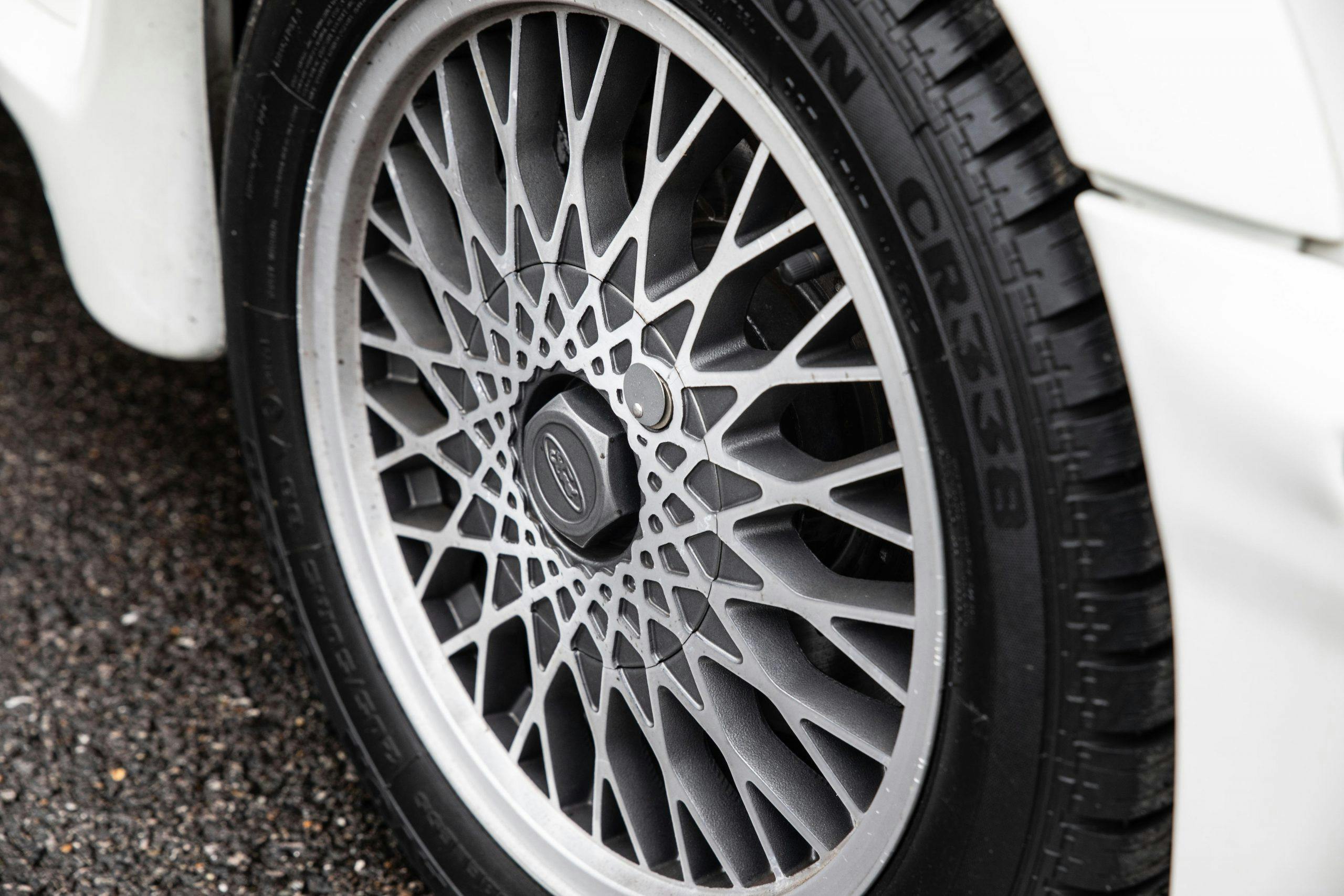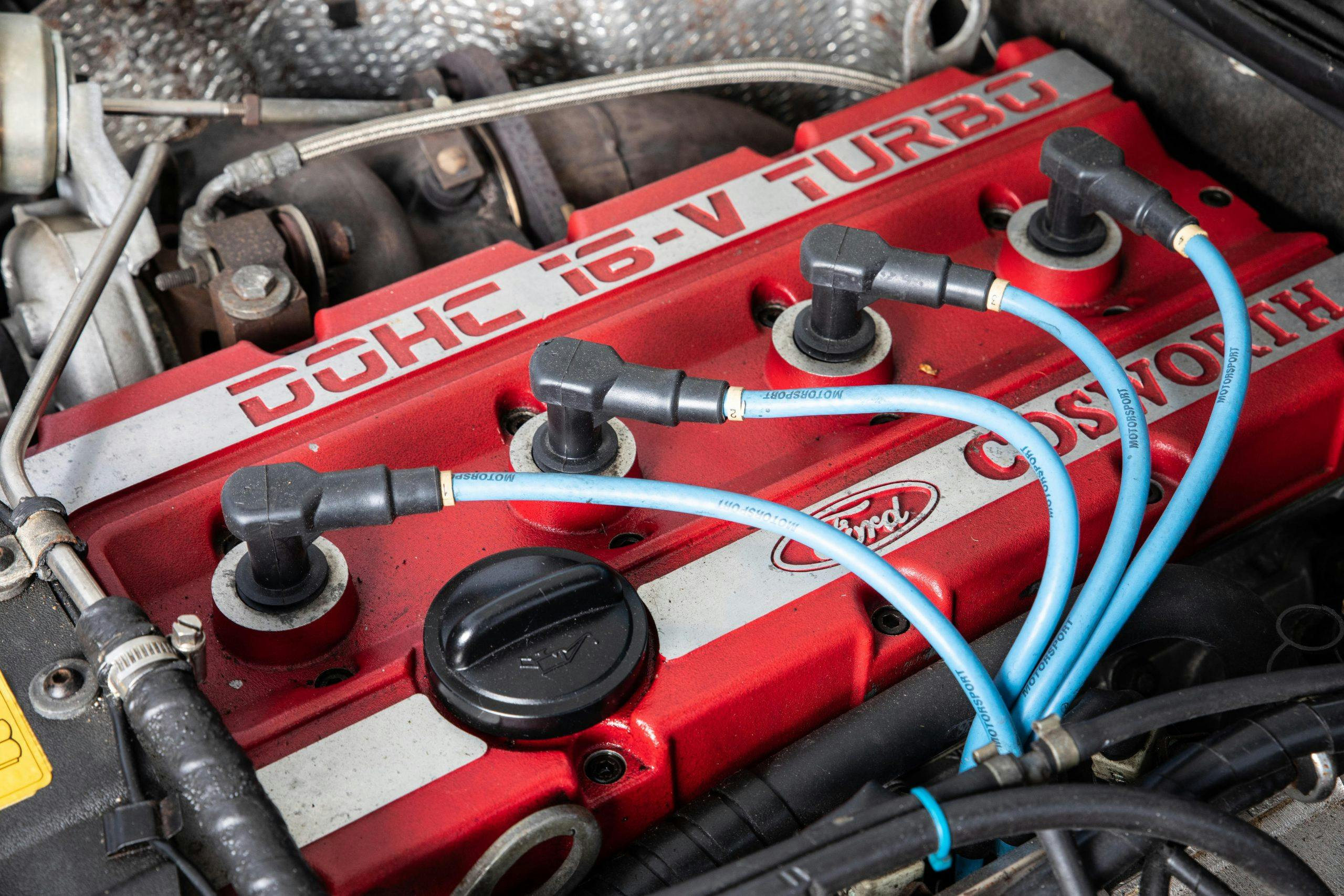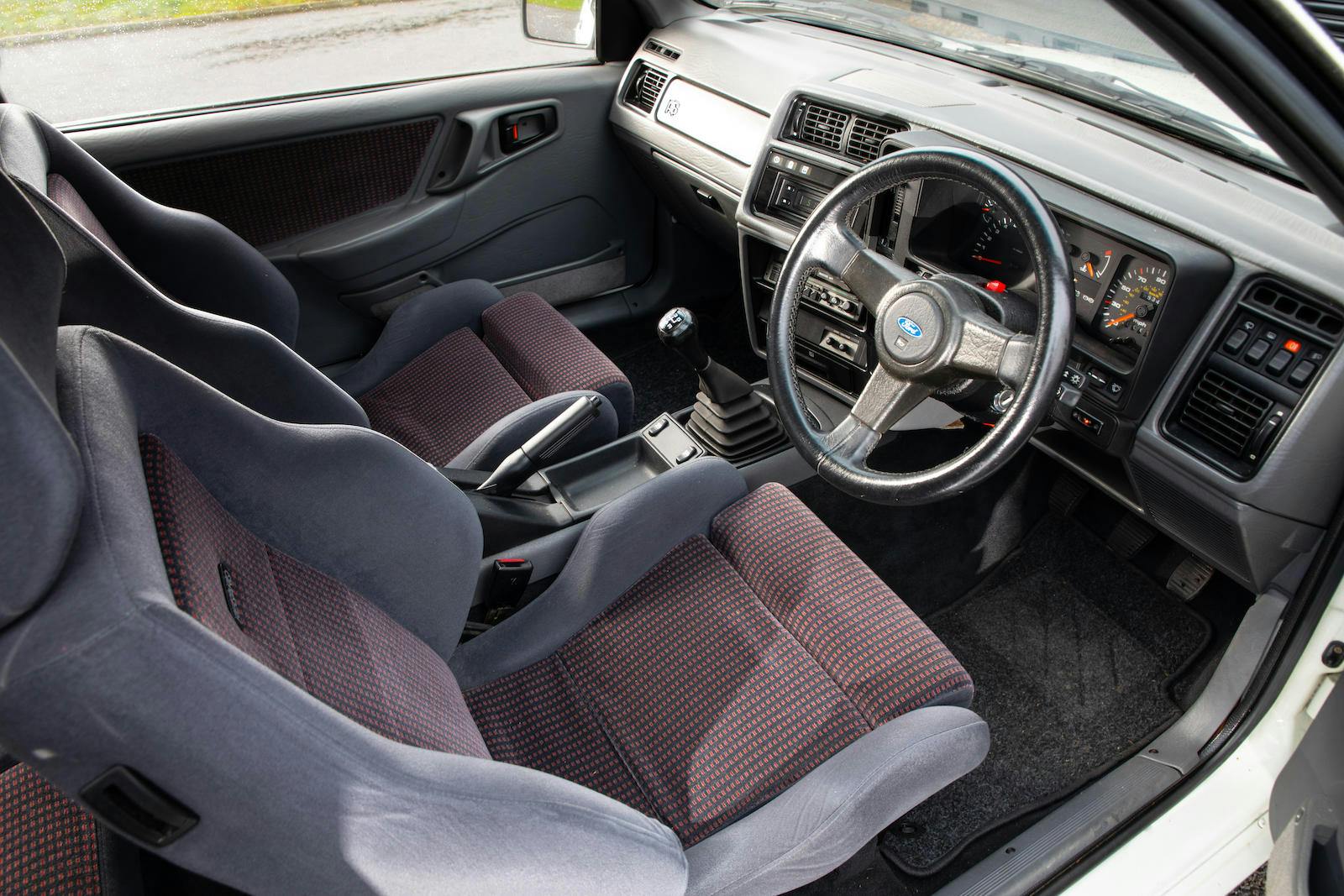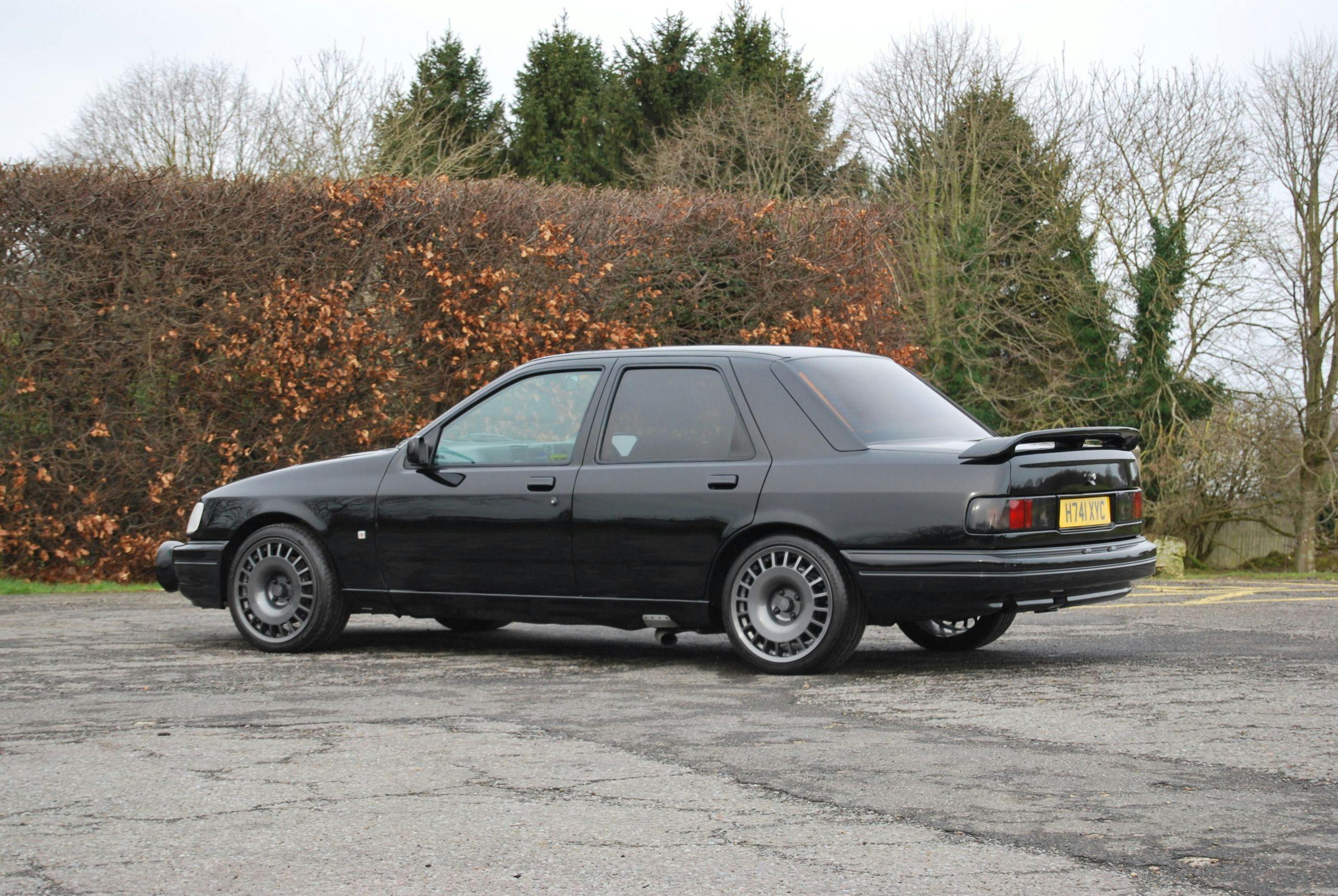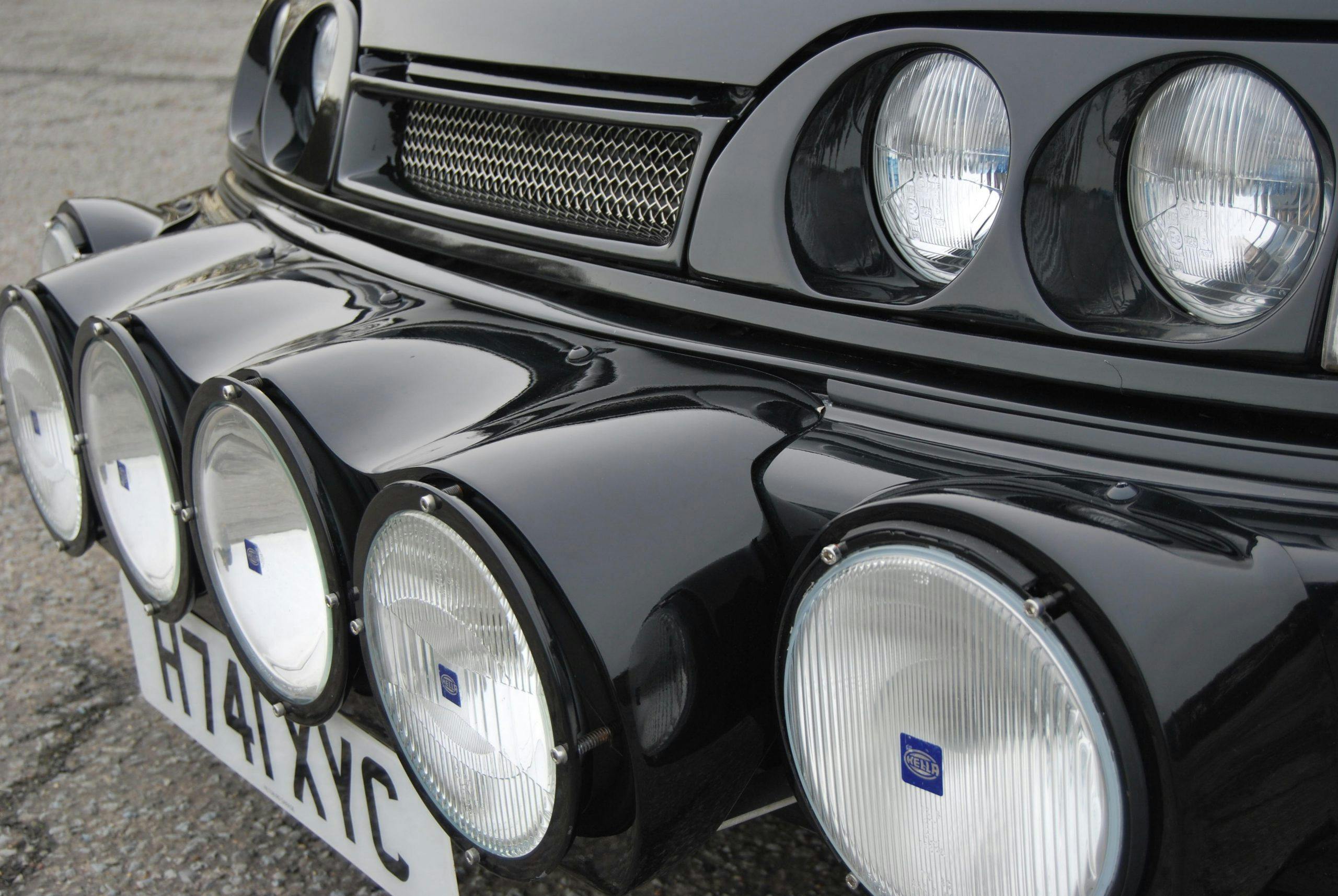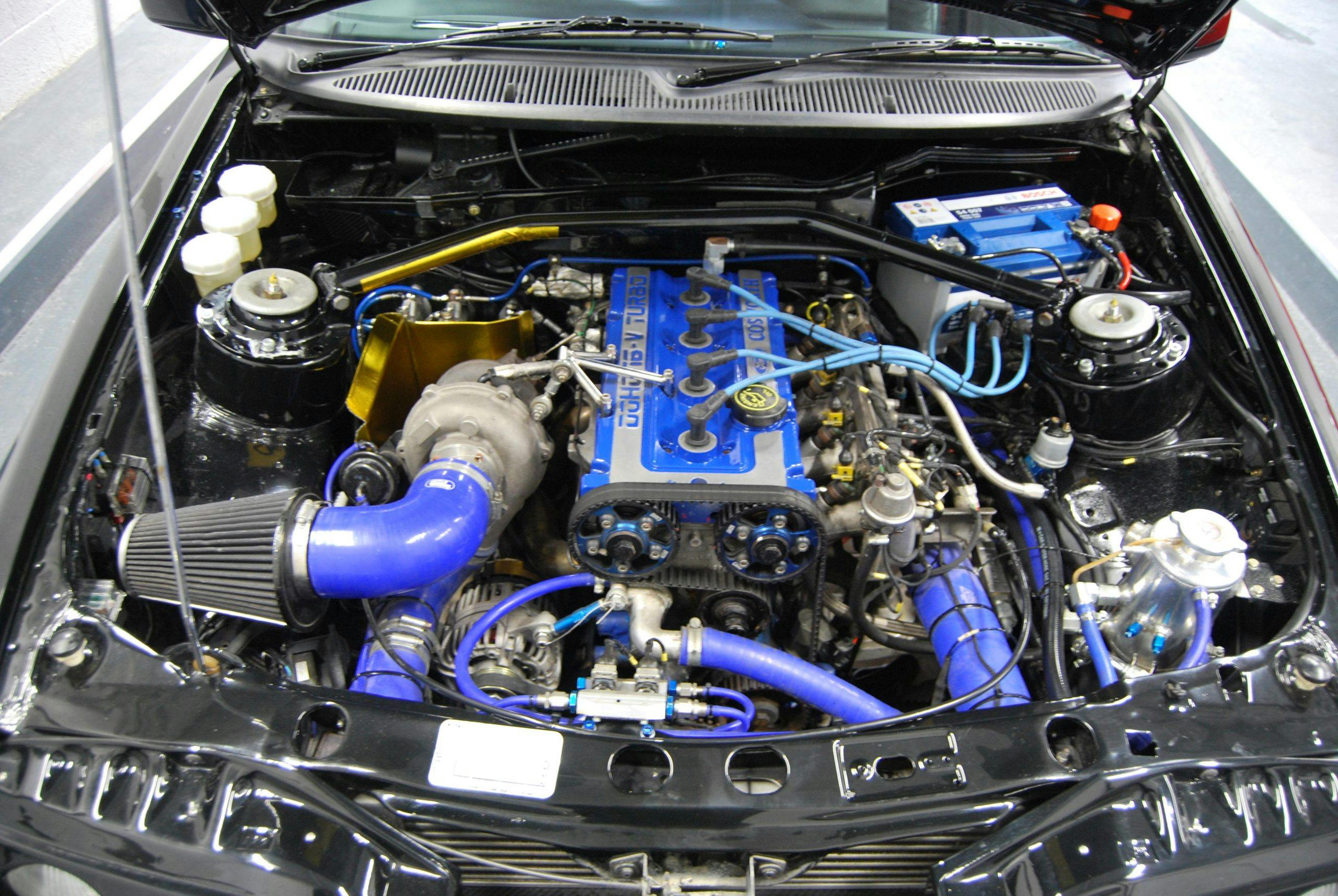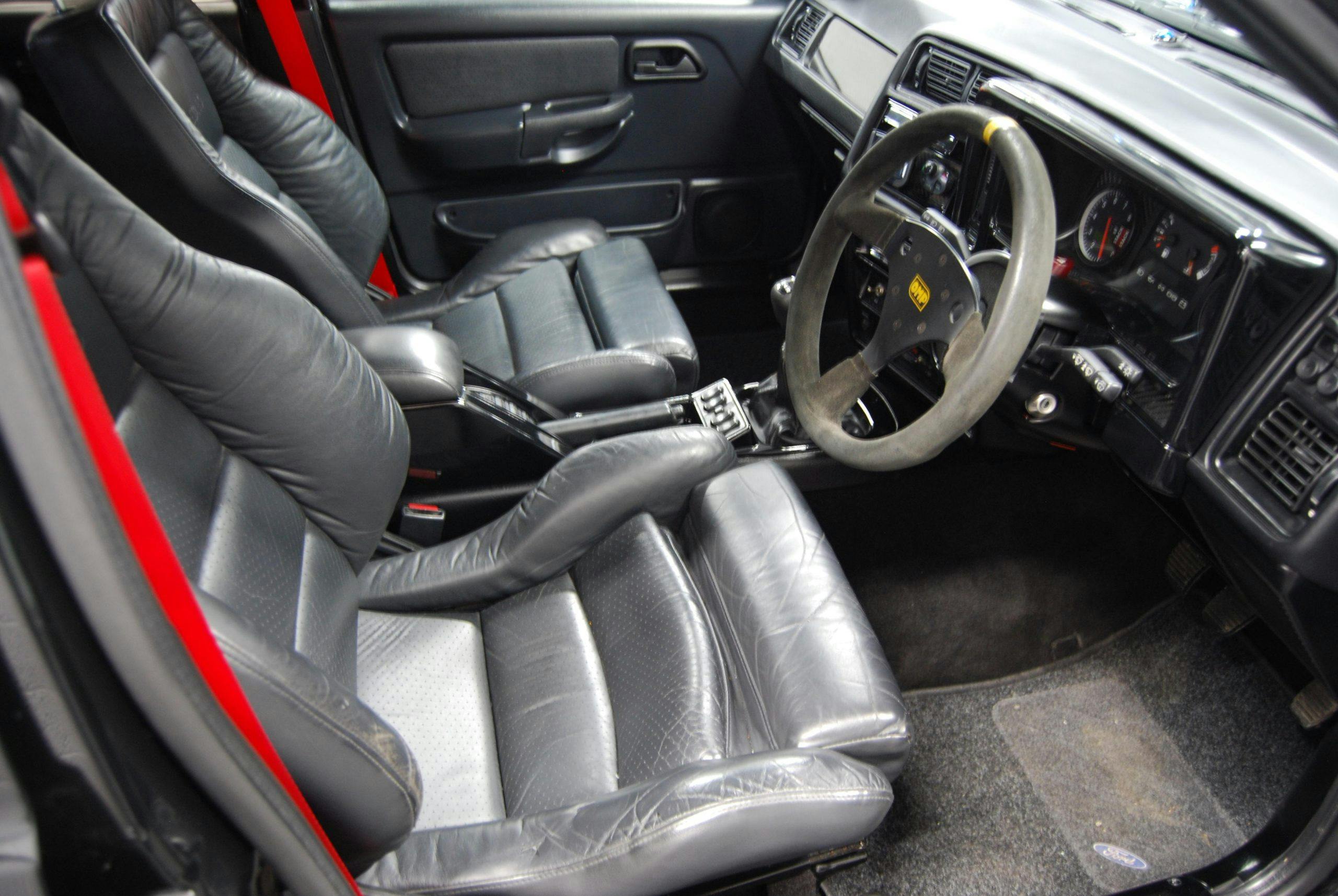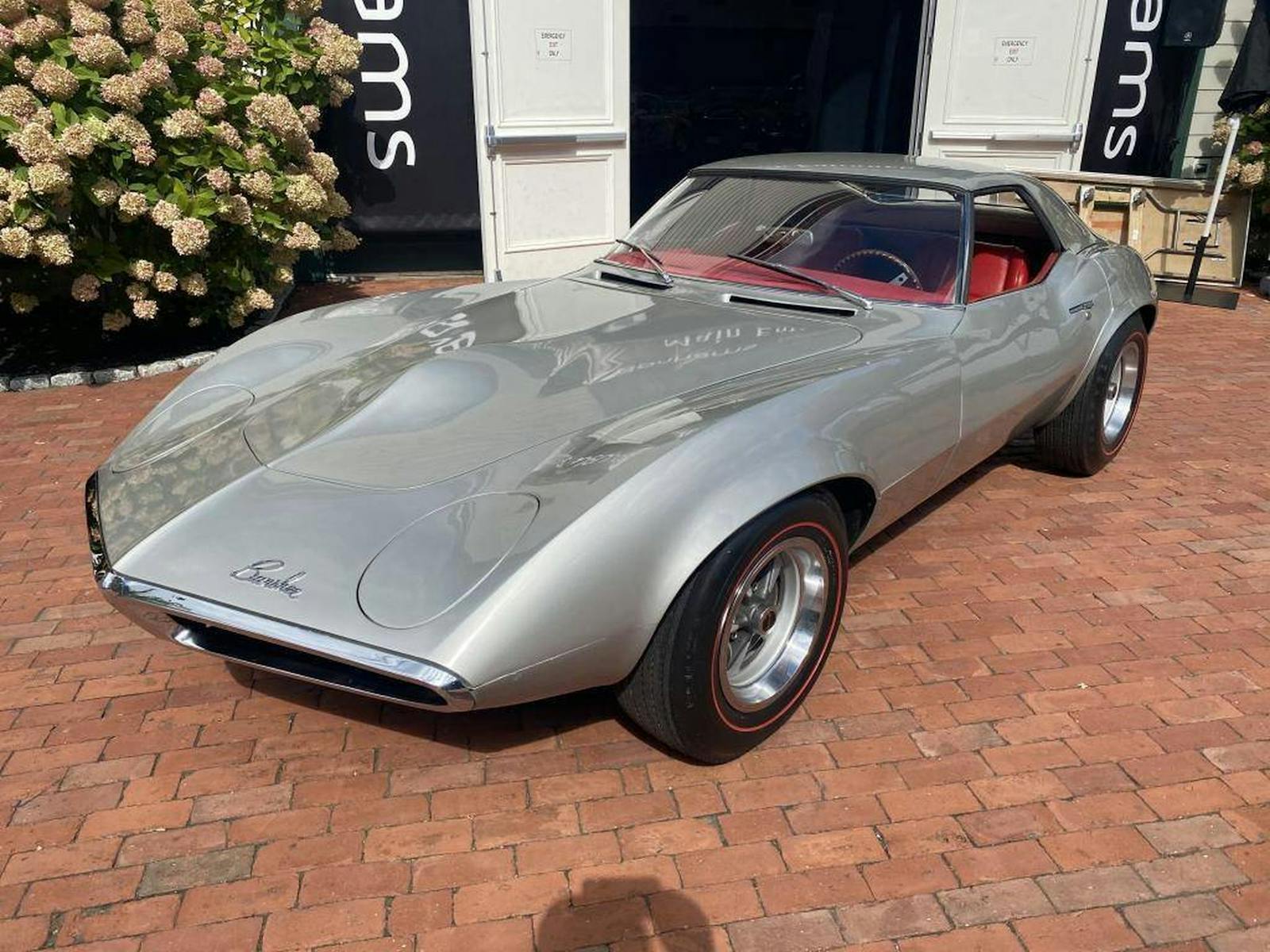Ford’s Sierra RS Cosworth was a bland commuter turned touring champ
The phrase “fast Fords” might sound as American as apple pie, but folks in the UK and Australia would beg to differ. Ford’s British and European operations in particular have produced some of the coolest cars to ever wear the blue oval—cars like the Escort RS1600 or the RS200. The 1986–92 Sierra RS Cosworth—a bland, Belgian-built commuter car turned touring car champion—is definitely on that list. Two Sierra Cosworths (aka “Cossies”) are up for grabs at Bonhams’ upcoming UK-based MPH online auction, scheduled for May 30.
Technically, we never got any Sierras here in the states (GMC trucks don’t count), but if that wacky rear spoiler and those fat, rectangular headlights look familiar, you’re probably thinking of the Merkur XR4Ti, a short-lived, sporty hatchback sold at Lincoln-Mercury dealerships from 1985–89. Based on the European market Ford Sierra XR4i, the Merkur was Ford’s (failed) attempt to take on fun-to-drive luxury imports like the BMW 3 Series. But while the XR4i is a peppy little car by ’80s standards, the Sierra Cosworth is in a whole different ballpark (or cricket pitch) in terms of performance, race pedigree, and collectability.
The genesis of the Sierra Cosworth is straightforward enough. Ford Motorsport over in Europe needed a competitive saloon car to assume the Capri’s mantle. Ford had the FIA’s Group A category in mind, which required 5000 examples built for homologation. The Sierra, although known to most people as a basic family car, was the logical starting point. Time for a homologation special.
In turning the Sierra into a track warrior, the engine wizards at Cosworth took the cast-iron block, 2.0-liter Ford four-banger (the same one from the Pinto) and fitted a 16-valve, belt-driven twin-cam aluminum head and a Garrett turbocharger with an intercooler, bringing output to a little over 200 hp and 205 lb-ft of torque. With 0–60 arriving in a little over six seconds and a 150-mph top speed, the Sierra Cosworth wasn’t the fastest car in the world even in the mid-1980s; but for a relatively affordable four-cylinder Ford hatchback, those numbers were jaw-dropping. It was like your local librarian running a 4.4 in the 40-yard dash.
Handling improved as well via changes to the suspension and a quicker-ratio steering rack, and power went to the rear wheels via a Borg Warner T5 five-speed—the same gearbox from the Mustang SVO and Thunderbird Turbo Coupe seen on our side of the pond. Visually, the Sierra RS Cosworth departed from its family car origins with wider wheels and wheel arches, vents in the hood (ahem, bonnet), and a gaping intake in the nose to feed the intercooler. The rear spoiler, meanwhile, is the most ridiculous-looking thing this side of a 911 Turbo’s whale tail. Despite taking a big chunk out of the rear visibility, the apparatus makes a significant amount of downforce and Ford put it there with cornering speed in mind, not lane changes.
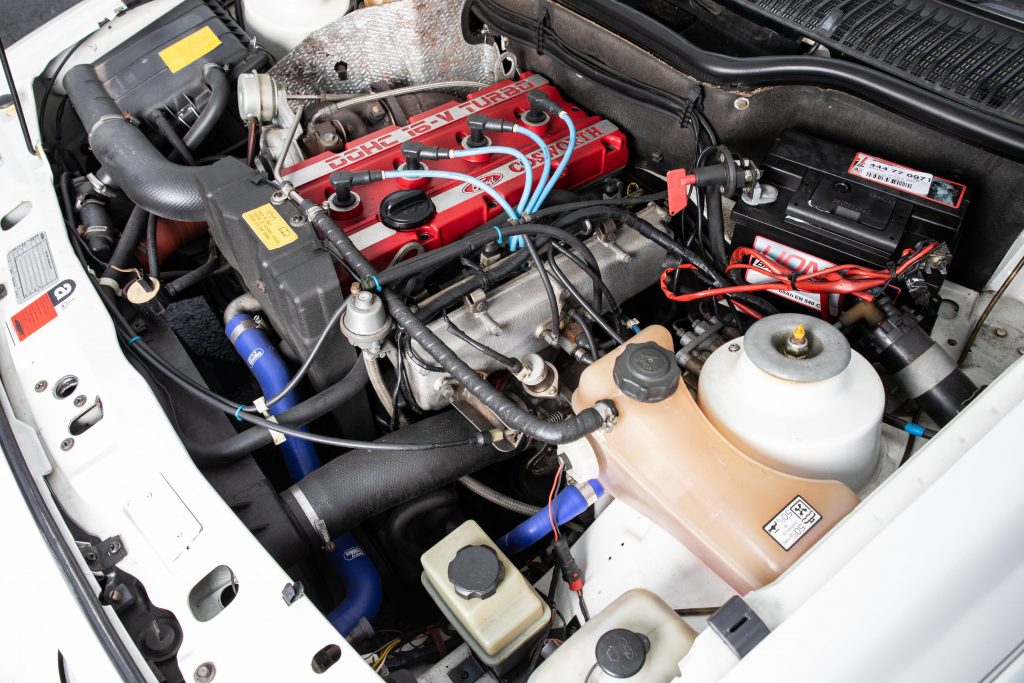
Ford launched the Sierra RS Cosworth at the 1985 Geneva Motor Show, and Motorsport magazine pronounced it “quite simply the best high performance saloon in the world.” In racing, Ford honed the concept with the RS500 Cosworth, which was a version revised by Aston Martin Tickford with a stiffer engine block, bigger turbo and intercooler, and twin-rail fuel injection, although in road-spec the second rail isn’t even connected. In road car trim, the RS500 brought power to 224bhp and in race trim raised it from 350 to over 500 hp.
In late ’80s touring car racing, Fords were the cars to beat. The Sierra Cosworth RS500 won the 1988 Deutsche Tourenwagen Meisterschaft (DTM, or, German Production Car Championship), the 1989 24 Hours of Spa, the 1988–89 Bathurst 1000, the 1988 European Touring Car Championship, the 1988–89 Japanese Touring Car Championship, the 1988–89 Australian Touring Car Championship, and the 1990 British Touring Car Championship. In rallying, the Cosworth’s rear-wheel drive left it lagging on loose surface events, but it was competitive on the paved stages and even won the 1988 Tour de Corse (Corsica) round of the World Rally Championship (WRC) outright.
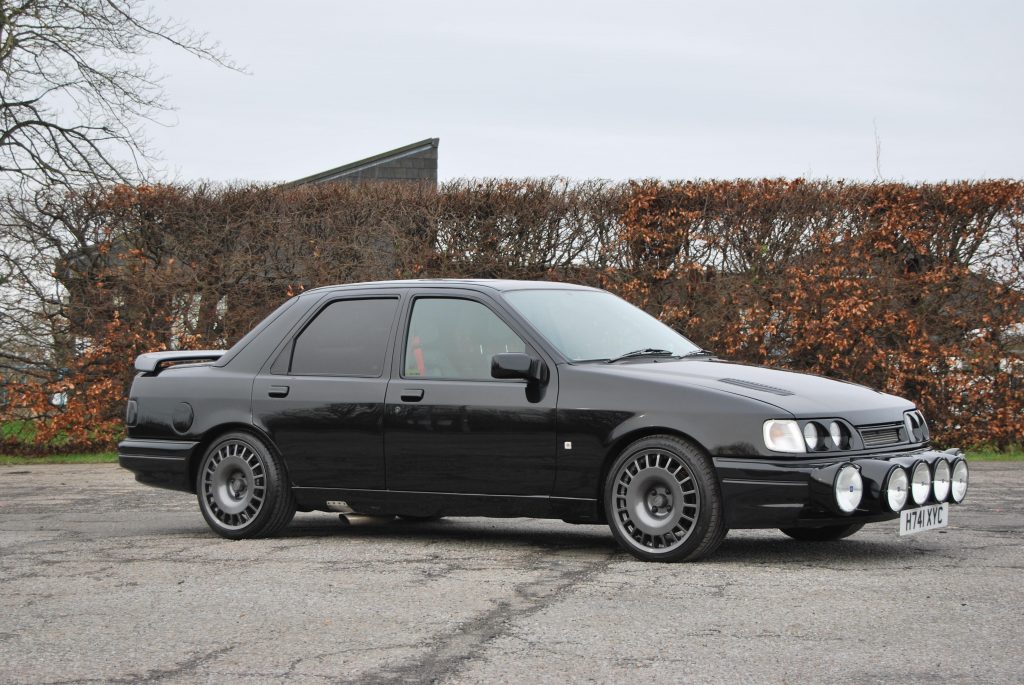
After Ford built slightly over 5500 Sierra RS Cosworths (including the RS500), production switched to a second-generation, four-door version called the Sapphire RS Cosworth. Then, the four-door got a four-wheel-drive system and engine improvements that included a larger turbocharger. Dubbed the 4×4, the Sapphire notched a few podium finishes in the WRC before being replaced by the legendary Escort RS Cosworth for the 1993 season.
Once they hit the second-hand market, Sierra Cosworths offered an affordable, easy to modify and ridiculously fun to drive speed machine. Unfortunately, it was also easy to steal and stuffed with desirable parts, not a desirable combo for anybody but the joyriders and more serious thieves doing the nicking. Insurance premiums on Cossies in the ’90s were legendary. All these years later, there aren’t a lot of clean ones left.
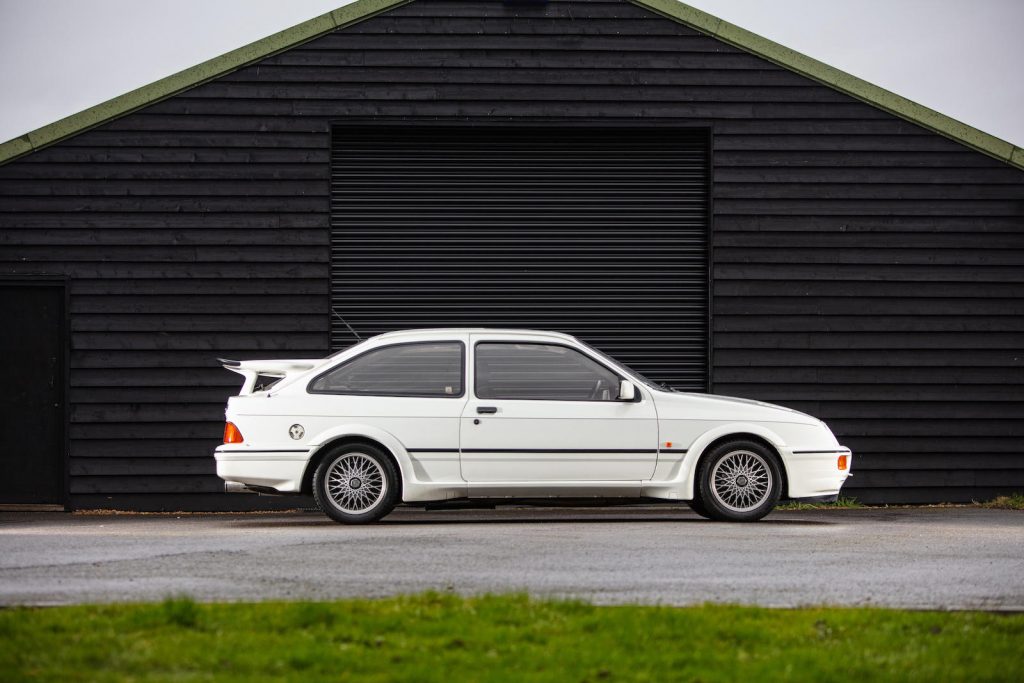
The 1987 Sierra RS Cosworth up for grabs at Bonhams’ MPH online sale is a first-gen, three-door car represented with 55,365 miles, but it looks like a clean example with little apparent wear on the Diamond White paint (Black and Moonstone Blue were the other available colors) or on those oh-so-’80s patterned cloth Recaro seats. There are minimal mods other than what looks like an aftermarket exhaust. This car sold for £32,062 (about $40,400) at auction in late 2016 with similar mileage but now carries a very ambitious £55,000–£75,000 ($69,000–$94,000) estimate.
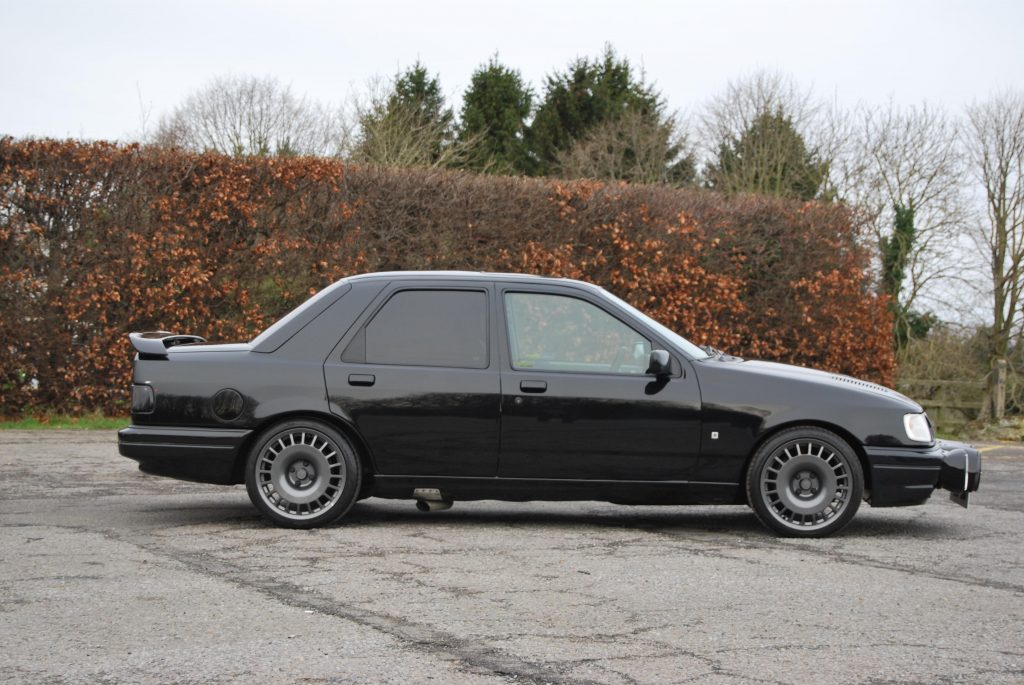
Also available in the MPH May online sale is a four-door, four-wheel-drive 1990 Sierra Sapphire RS Cosworth 4×4. With over 12,000 built, the Sapphire RS Cosworth 4×4 is more common, less distinctive, and less valuable than the original three-door, rear-wheel-drive model. Bonhams’ example is also more extensively modded with upgrades to the powertrain, suspension, and interior—not to mention the wall of rally lights hanging off the nose. That said, it still packs “Cossie” street cred and carries a much more modest £30,000–£40,000 ($37,000–$50,000) estimate.
If you’re looking for a Ford homologation special with a cosmopolitan pedigree and an impressive racing ancestry, these funky ’80s hatches might be up your alley.

